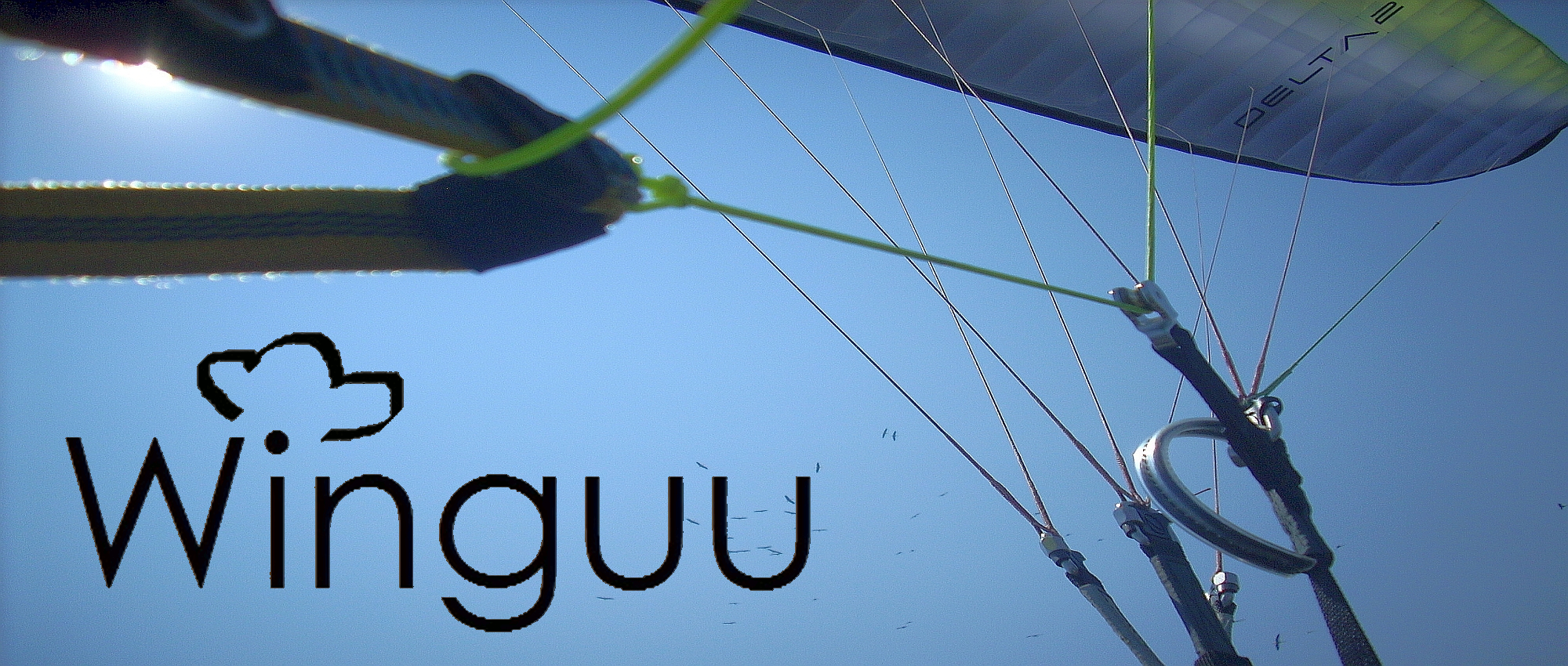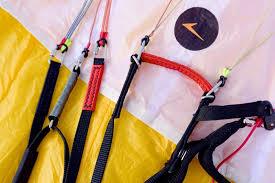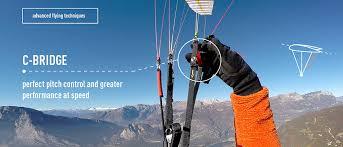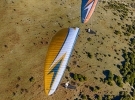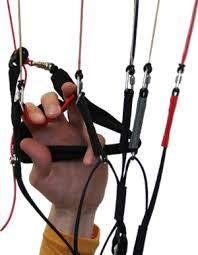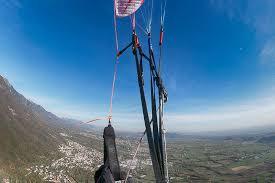C Bridge – Riser technology by Swing
This additional riser steering system designed by Michael Nesler (also introduced the RAST technology) is implemented also on the brand new NYOS RS glider model.
Performance-oriented flying means flying fast. This is especially the case in competitions. The need to fly as fast as possible in competition has given rise to a special flying technique on 2-liner-competition wings: using the rearmost main lines, instead of the brakes, to stabilize the canopy while using the speed bar.
For some time now the competition wings from most manufacturers have featured rear riser control possibilities on the B- or C-risers. These globes, loops or grips assist the pilot in using the rear risers to stabilise the wing by manipulating the angle of attack while on speed bar in turbulence. This way, the pilot is given the possibility to prevent imminent disturbances (front collapses) without having to release the speed bar. Further, steering input via the brakes is not recommended while on speed bar, as applying the brakes while using the speed bar can destabilise the profile (concave profile).
With the new EN-C wing NEXUS, SWING has further optimised the concept of rear riser control and now offers this with the new wing NYOS RS as well. This high-end EN B wing features a connecting bridge between the tops of the split C-risers: the C-BRIDGE. It allows C-steering through the rear risers for the most part without any disruptive compromises in performance. And it allows fine tuning outwards or inwards, but more about that later.
The C-BRIDGE offers four options for advanced flying:
- if the pilot pulls down the C-BRIDGE briefly and suddenly, both C-risers are shortened slightly which causes braking or rather positioning of the profile. This pitch control allows the pilot, e.g. to stay on the gas for longer while crossing valleys in turbulent conditions and to control turbulence using the C-BRIDGE.
- if, in contrast, the pilot pulls the C-BRIDGE delicately and more towards the outside, corrections to direction can be made at full throttle without any loss in performance.
- Furthermore, as designer Michael Nesler points out, the C-bridge also enables enhancement of gliding performance in accelerated flight. SWING has carried out a number of tests which conclude that slightly pulling down the outer C-riser, when on speed bar, improves glide ratio by up to 0.5.
- The C-BRIDGE can be used at trim speed as well as at high speeds. The system can be used in light conditions to allow particularly effective and even circling.
Easy Groundhandling with the C-BRIDGE
The C-BRIDGE also prevents twisted C-risers during ground handling and the launch phase, another positive side-effect. With strong winds in take-off the C-BRIDGE allows perfect control of the wing over the C-risers.
A quote from SWING-competition pilot Erwin Auer (albeit about the NEXUS):
“With the C-BRIDGE steering the NEXUS is almost like flying a two-liner – I really have the feeling that I am taking the bull by the horns”.
